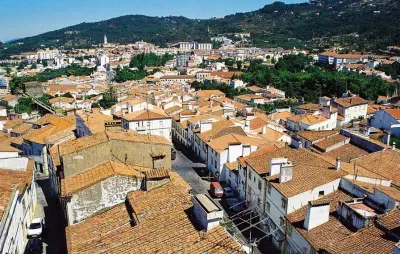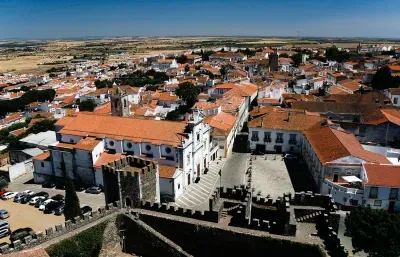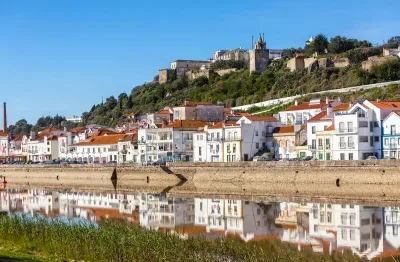Grândola

Grândola, in the Setúbal district, is a typical small Alentejan town. Set amidst plains of crops and vast gatherings of cork trees, for which the area is famous, it is hot and dusty in the summer months and yet captures the feeling of a place where people work hard but also take life at a leisurely pace, appreciating their surroundings – often the stereotype of the Alentejan people.
Estremoz

The semi-arid plains of the eastern Alentejo stretch for miles before the pyramid-like settlement of Estremoz looms into view. To sum this place up in a few words, one would choose historically significant, strategically situated and dramatic. During Portugal’s long struggle to retain its sovereignty in the face of invading Spanish armies, Estremoz always played a vital role.
Portalegre

Visiting Portalegre is not so much about visiting one interesting town, but about visiting a whole cluster of northern Alentejan towns, each with their own tale to tell, and with Portalegre at their centre. The region contains a wealth of historical monuments and anecdotes, awe-inspiring views from the fortified hilltop towns and a good smattering of prehistoric treasures to boot. For the energetic or hot, a host of dams (barragem) offer the perfect opportunity for water sports and a cooling swim in the hot summer months of the Portuguese interior.
Evora

Even from a distance the majestic importance of Evora is apparent, its cathedral dominating the view of the famous white and yellow city as it stands atop a hill surrounded by the vast expanses of the Alentejan plain in southeast Portugal. With over two thousand years of history and, therefore, a variety of cultural and architectural influences, Evora is a real national treasure and certainly merits its status as a UNESCO world heritage site.
Beja

Inhabited since the Bronze Age, Beja became capital of the Lower Alentejo region under Roman rule in the 1st century and thence known as Pax Julia, after Julius Caesar. The Visigoths renamed it Paca until the invasion of the Moors in the 8th century where the definitive name Beja was declared. Its evident importance is perhaps owing to its stunning location rising sharply out of the fertile plains of the Baixo Alentejo, its majestic form still crowned with a castle dating back to the 14th century.
Alcacer do Sal

Alcácer do Sal is an historical town crowned by castles whose medieval cobbled streets, worn over time, cluster around the banks of the Sado River, in the district of the town of Setúbal. Wrought-iron balconies look out over the river and underneath them dwell a variety of cafés and restaurants. The Sado flows sleepily past, yet the mighty ramparts and towers remind us of times when this, like other hilltop towns in Portugal, played an important part in territorial battles.